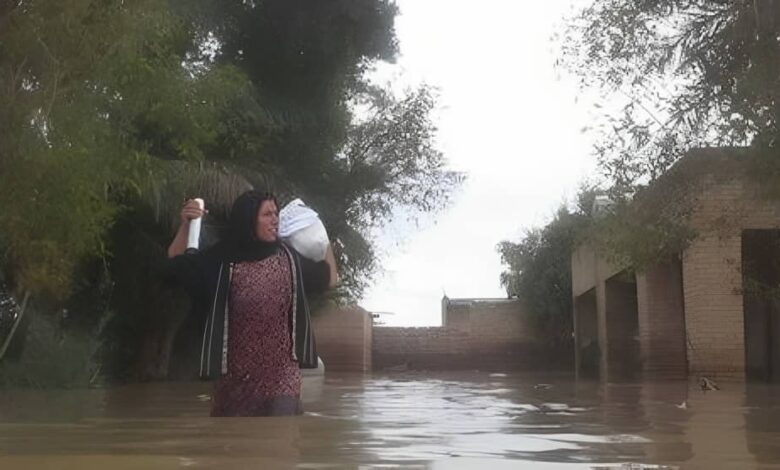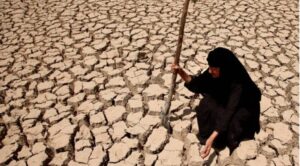Exploring Traditional Rainwater Harvesting in Iran

iran floods women in water (1)
Written by
Khalil Khani
Iran has been in its current geographical location for thousands of years. Its people have adapted to this environment and created a magnificent civilization in this part of the world. In addition, throughout history, Iran has faced natural calamities such as floods, droughts, earthquakes, fires, and locust attacks, to the extent that Iran is historically referred to as the country of “floods and droughts”. Considering the average amount of annual rainfall, which does not show any drastic change in its regime, the existence of terrible floods and drought along with the historical background of Iranians in managing water resources, i.e. “Qanat“.
It cannot be said that Iran is suffering from water bankruptcy. The center and east of the country will inevitably be emptied. What has made water in Iran such a problem, which has humiliated the people and left them defenseless against natural disasters? It is the lack of popular sovereignty in a period of at least a hundred years as well as the lack of optimal sustainable management of its water resources and a failure to consider the associated challenges under monarchy and clerical rule alike.
Iran is currently faced with a water crisis and serious environmental problems. The treacherous policies and the management of the mullahs’ rule of Iran’s natural ecosystems have caused deterioration in the spatial and natural order of the country. The immediate results of such policies are frequent droughts coupled with the depletion of water resources, resulting in over-harvesting of surface and underground water resources. Also, the design of large networks of structural and hydraulic infrastructure as well as deep wells has brought the country’s water situation to such a critical level. The obvious signs of this situation are the drying up of lakes, rivers, and wetlands, reductions in the volume of underground water, land subsidence, decreases in water quality, soil erosion, desertification, salinity levels, and more dust storms. Although the various authorities of the mullahs’ rule, referred to as the so-called experts, their friends, and other local and non-native storytellers, attempt to pretend that global warming and climate change are the causes of Iran’s water problem and other environmental crises.
Nevertheless, the fundamental weakness of the oligarchic-monopolistic governance in Iran cannot be hidden and must be recognized, which has completely ignored the people’s desire for proper management of renewable natural resources.

iran desertification (1)
Iran is located on the dry belt of the earth, with more than 70% of its land classified as arid and semi-arid areas. Experts have stated four main reasons for the water crisis in Iran: lack of principled spatial planning, improper management, inappropriate development according to geographical and climatic conditions, and wrong decisions about water allocation. As a result, Iran has faced a severe water problem both on a local and national scale. Specialists and practitioners of water management argue that if these problems are not solved, they will definitely bring a lot of harm to the country and the region in the coming years.
Also, the increase in water demand not being matched by natural supply has led the country to become water bankrupt. Theoretically, this problem can be solved by re-balancing water supply and demand through reasonable and sustainable development of water resources, change in policy-making, and the implementation of serious programs in order to bring about a real balance between water supply and demand. Of course, due to the current structure of the governance system, destructive water exploitation policies in Iran, the insistence on the false logic of self-sufficiency in agriculture, the creation of water extraction industries in dry areas, and a lack of comprehensive understanding of the root causes of the problems, there is no hope for sustainable solutions to solve the water problem.
Water scarcity remains a critical challenge in various parts of the world, particularly in arid regions like Iran, with a rich history of ingenious water management techniques. Such traditional rainwater harvesting methods have played a pivotal role in mitigating water problems. Over centuries, Iranians have harnessed their deep understanding of the environment to develop sustainable systems for capturing and storing rainwater, ensuring the survival of communities and agriculture. This article delves into the historical significance, techniques, and modern implications of traditional rainwater harvesting in Iran.
The practice of rainwater harvesting in Iran dates back thousands of years, reflecting the nation’s ancient wisdom in coping with water scarcity. References to these techniques can be found in texts as old as 3000 years, highlighting the enduring importance of water conservation in the region. Historical accounts reveal the Persians‘ and Elamites’ mastery of rainwater collection through innovative structures like Qanats, Aab anbars, and rooftop catchment systems.
The Engineering Marvels, Qanats, an ancient Persian innovation, are underground tunnels that tap into groundwater sources to transport water from distant hills to communities. This method ensures minimal evaporation and contamination, providing a consistent water supply even in arid conditions. The Qanat system reflects an intricate understanding of hydrogeology, hydraulics, and architectural prowess.
Qanat is one of the oldest technologies in the field of extracting water from underground sources, which fits the climatic conditions of Iran. It has its roots in its history, but today these tunnels containing water are on the verge of destruction, and the opponents of preserving Qanats consider its supporters to be old-fashioned. History shows that Iranians were the first people who acquired the knowledge and technology of digging Qanats and after that, this knowledge was transferred to North India, North Africa, and Spain. Also, the Iranians were the first civilization that popularize the use of water in agriculture.
The components of Qanats are the different parts of this underground aqueduct that bring water from the upstream (Madarchah) to the downstream points (Mazhar) of the Qanat, which is called its manifestation. Underground water passage channel (aqueduct) from the mother well until the outlet, the distance is equally divided with accurate approximation, which are called cylindrical well bars or rings. The well shaft is drilled vertically and its intervals are accurately calculated. For example, if the depth of the mother well is 100 meters, the distance between the shafts or rings of the wells is approximately 100 meters. This design is such that makes it possible for the technician to breathe, dig, and to discharge the excavated material around the nearest well shaft. These shafts are placed in such a way that they allow access to the aqueduct. A part of the tank in the lower part of the static level of underground water is called Tarkar or Taron. The upper part of the static water level is also called the dry aqueduct. The last shaft which is the deepest, is called (main well) or the mother well.

iran infographic wells qanat channel (1)
Until the 1960s, Qanats supplied water to the fields of more than 60,000 villages in the country. With the introduction of new technologies, the digging of deep wells replaced Qanats, and the use of motor pumps to bring water from the depth of the well to the surface of the earth gradually became common. This, along with some other factors, caused Iranians to forget the importance of Qanats without research. The drilling of numerous deep wells in the past years has undoubtedly caused the water level of the underground aquifers to drop, which has resulted in the drying up of more than 90% of Qanats. Unregulated withdrawals of underground waters are the main cause of the drying up of Qanats these years.
Failure to pay attention to the maintenance and protection of Qanats and the implementation of large development projects such as the construction of towns, airports, etc., and disregarding the existence of a series of Qanats in those areas, anthropogenic drought, and water contamination are among other factors that have led them to the brink of destruction. So that by the early 80s, the water flow of Qanats was about 7 billion cubic meters, and in less than 20 years, Iran lost 3 billion cubic meters of it. Qanats, which played a very important role in central Iran, are either drying up or losing their water supply one after another due to excessive exploitation of underground water resources.
In total, Qanats are vulnerable to the excesses of the new social thinking and cannot compete with deep wells and motor pumps. Nevertheless, taking a brief glance at sustainability, Qanats are accepted as a stable system and a part of the cultural heritage that humans must preserve. One such country that has recognized the importance of its Qanats is Oman, which has preserved and registered five of them as World Heritage Sites and established a Qanat research institute at a university. Some countries, even though they have Qanats, do not pay much attention to them, and their situation is degrading. For example, in North African countries there are no active Qanats left.
In light of contemporary challenges like climate change, urbanization, and growing populations, traditional rainwater harvesting techniques are experiencing a revival. Recognizing the importance of sustainable water management in arid areas, water experts and environmentalists are advising community-driven projects to reinvigorate Qanats, restore Aab anbars, and integrate modern technology into these methods. Iran’s traditional rainwater harvesting techniques stand as a testament to the resourcefulness and adaptability of ancient civilizations.

iran desertification sunset (1)
These techniques not only address ways of overcoming water scarcity but also exemplify a holistic approach to water management, where environmental harmony and human needs coexist. As Iran navigates its water challenges, the revival of these age-old practices, supported by modern insights, serves as an inspiration to the world. Recognizing the value of traditional wisdom, Iran paves the way for a more sustainable and water-secure future. However, at this point, there is a real barrier to such optimism, and that is the existing clerical regime that has hijacked all potential financial and natural resources of Iran for suppression, terrorism, human rights violation, atomic activities, and development of mass destruction arsenals. In order to have a holistic approach to solving Iran’s environmental crisis, including water, the country must eliminate the clerics ‘ rule. Then, all crises can be scientifically discussed, and proper methods to overcome them can be collectively decided upon.
* Khalil Khani is an Environmental Specialist and a Human Rights activist. He holds a Ph.D. in Ecology, Botany, and Environmental Studies from Germany and has taught at the University of Tehran and the Hesse State University in Germany. He is also a Doctor of Medical Psychology from the United States.

